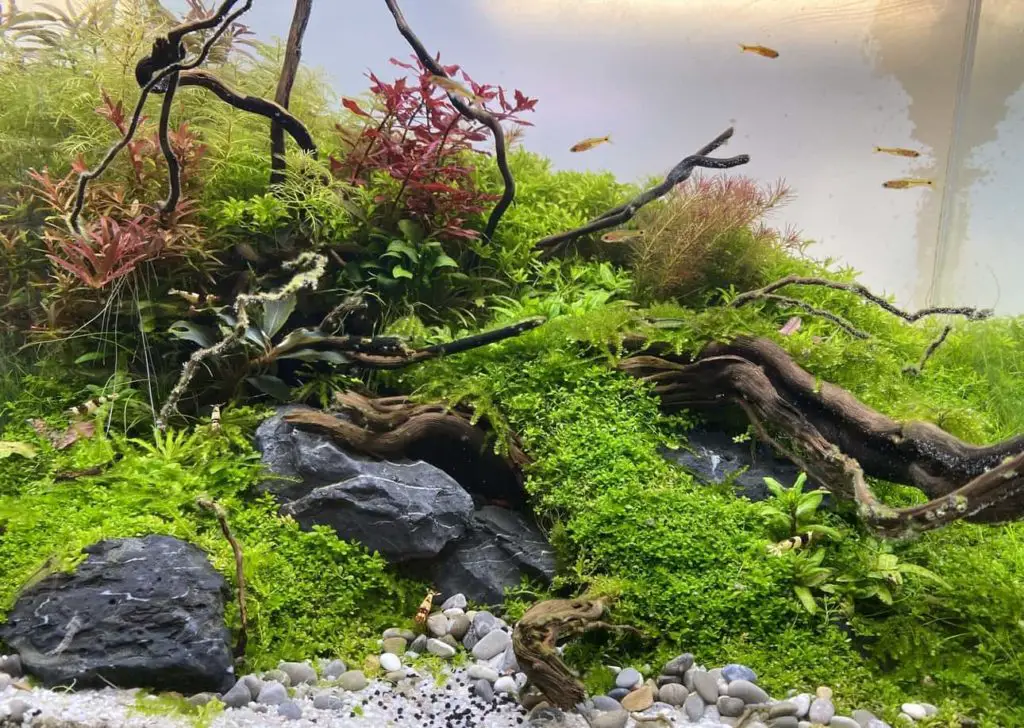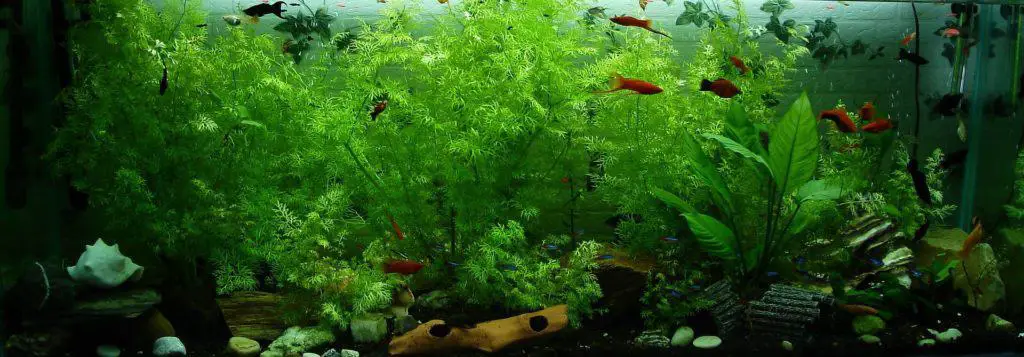Mimicking the natural habitat for betta fish is important because it provides the necessary conditions and elements that betta fish need to thrive and live happy and healthy lives. Betta fish are native to the warm, shallow waters of Southeast Asia, and their natural habitat includes a variety of plants and other aquatic life. In captivity, mimicking the natural habitat can help provide the appropriate temperature, filtration, and plants that betta fish need to live comfortably and stay healthy.
By creating a mimicked natural habitat, betta fish owners can help ensure that their fish have the best possible environment for their wellbeing.
Understanding the Natural Habitat of Betta Fish
The natural environment of betta fish includes the warm, shallow waters of Southeast Asia, such as rice paddies, canals, and slow-moving streams. In their natural habitat, betta fish are found in waters with a temperature of 78-82 degrees Fahrenheit, and they are adapted to live in areas with low oxygen levels. This means that betta fish can survive in waters that may not be suitable for other fish species and can extract oxygen from the air using a specialized organ called the labyrinth organ.
In their natural habitat, betta fish also prefer environments with plenty of plants, as these provide hiding places and shelter, as well as sources of food. Betta fish are territorial, and the presence of plants can help reduce aggression and create a peaceful environment.
Betta fish feed on insects, worms, other small prey, algae, and other plant matter, in the wild. This diverse diet provides the essential proteins, fats, and vitamins that betta fish need for optimal health.
Overall, the natural environment of betta fish includes warm, shallow waters with plenty of plants and a varied diet of small prey and plant matter. Mimicking this environment in captivity can help provide betta fish with the conditions and elements they need to thrive and live happy and healthy lives. By understanding the natural habitat of betta fish, fish owners can create the best possible environment for their pets.

The Benefits of Mimicking the Natural Habitat
Mimicking the natural habitat for betta fish can help them thrive and live happy and healthy lives in several ways. First, providing the appropriate water conditions, such as a temperature of 78-82 degrees Fahrenheit and adequate filtration, can help betta fish live comfortably and stay healthy. This can prevent various health problems, such as bacterial infections and ammonia poisoning, which can be caused by poor water quality.
Second, providing plenty of plants in the betta fish habitat can help create a peaceful and harmonious environment. In the wild, betta fish live among plants, and the presence of plants can help reduce aggression and develop a sense of security for the fish. In addition, plants can help maintain good water quality and provide additional oxygen to the water, which is essential for betta fish health.
Overall, mimicking the natural habitat of betta fish can help provide the conditions and elements they need to thrive and live happy and healthy lives. By creating a mimicked natural habitat, betta fish owners can help ensure that their fish have the best possible environment for their wellbeing.
7 Steps for Creating a Mimicked Habitat for Betta Fish
There are several steps involved in creating a mimicked habitat for betta fish, including the following:
- Choose the right tank: The first step in creating a mimicked habitat for betta fish is to choose the right tank. Betta fish are small and do not require a large tank, but selecting a large tank is crucial to provide plenty of swimming space and room for plants. A tank of at least 5 gallons is recommended for one or two betta fish.
- Provide the appropriate water temperature: Betta fish are native to Southeast Asia’s warm, shallow waters and require a water temperature of 78-82 degrees Fahrenheit to thrive. It’s essential to use a reliable aquarium heater to maintain a consistent water temperature and to monitor the temperature regularly to ensure that it stays within the appropriate range.
- Install a suitable filter: Proper filtration is essential for maintaining good water quality and removing waste and toxins from the water. It’s important to choose a filter appropriate for the tank. We recommend a small internal filter that provides gentle water flow.
- Add plants: Betta fish prefer environments with plenty of plants, and adding live plants to the tank can help create a natural and peaceful environment for the fish. Live plants can also help maintain good water quality and provide additional oxygen to the water. You can use various plants in a betta fish tank, including floating plants, plants that attach to decorations, and plants that you can plant in the substrate.
- Monitor the water quality: Regular monitoring of the water quality is essential for the health and wellbeing of betta fish. This involves testing the water for pH, ammonia, nitrite, and nitrate levels and taking appropriate action if any levels are outside the acceptable range. Water quality can be affected by various factors, including the number of fish in the tank, the amount of food provided, and the frequency of water changes.
- Perform regular water changes: Regular water changes are essential for maintaining good water quality and removing waste and toxins from the water. We recommend performing a partial water change (25-50%) every week and a full tank cleaning every 2-4 weeks. During a water change, it’s crucial to carefully siphon out debris and uneaten food and replace it with fresh, treated water.
- Provide a balanced and varied diet: Betta fish are omnivorous, requiring a diverse and balanced diet that includes plant and animal-based foods. In the wild, betta fish feed on various insects, worms, other small prey, algae, and other plant matter. In captivity, you can feed betta fish different commercial fish foods, including pellets, flakes, and freeze-dried options. It’s important to avoid overfeeding and to offer a variety of foods.

The Role of Plants in the Betta Fish Habitat
Plants are an important element in the betta fish habitat, providing various benefits for the fish.
- First, plants can help create a natural and peaceful environment for betta fish. In the wild, betta fish live among plants, and the presence of plants can help reduce aggression and create a sense of security for the fish.
- Second, plants can help maintain good water quality and provide additional oxygen, which is essential for betta fish health.
- Third, plants can provide hiding places, shelter for betta fish, as well as sources of food.
When choosing plants for a betta fish tank, it’s essential to consider the size and behavior of the fish. Betta fish are small and can easily be intimidated by large plants, so it’s best to choose smaller plants that provide plenty of hiding places and shelter. Betta fish are also known to nibble on plants, so choosing plants that are not toxic to fish and can withstand some nibbling is important. Some good options for betta fish tanks include floating plants, plants that attach to decorations, and plants you can plant in the substrate. Some examples of suitable plants for betta fish tanks include hornwort, java fern, and anubias.
Conclusion
In summary, creating a mimicked natural habitat for betta fish is vital for their health and wellbeing. By providing the appropriate water conditions, including temperature and filtration, and adding plenty of plants, fish owners can help ensure that their betta fish have the best possible environment for their wellbeing. In addition, regular monitoring of the water quality, frequent water changes, and a balanced and varied diet can help maintain good water quality and support the health of betta fish. By following these steps and prioritizing the creation of a mimicked natural habitat, fish owners can help ensure that their betta fish live happy and healthy lives.
